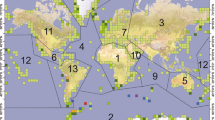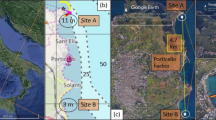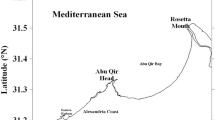Abstract
THE presence of organically bound niobium has been demonstrated in ascidians1, and unpublished evidence suggests that this niobium is absorbed in some way from sea-water. It is thus of importance to know if niobium can be detected in sea-water and to obtain some indication of its concentration. Consideration of the known amounts of niobium present in an adult Molgula manhattensis, its rate of development, length of life and rate of filtration of water leads one to suppose that if the water current is the sole source of niobium then, in regions where these species and other species of ascidians which utilize niobium flourish, it cannot be present in the sea in less concentration than 0.05 µgm./l. The chromatographic method of niobium analysis developed by Hunt, North and Wells2 is capable of revealing the presence of 10−7 gm. of niobium. At a concentration of 0.05 µgm./l., this amount could be expected in 2 1. of sea-water.
This is a preview of subscription content, access via your institution
Access options
Subscribe to this journal
Receive 51 print issues and online access
$199.00 per year
only $3.90 per issue
Buy this article
- Purchase on Springer Link
- Instant access to full article PDF
Prices may be subject to local taxes which are calculated during checkout
Similar content being viewed by others
References
Carlisle, D. B., Nature, 181, 933 (1958).
Hunt, E. C., North, A. A., and Wells, R. A., Analyst, 80, 172 (1955).
Author information
Authors and Affiliations
Rights and permissions
About this article
Cite this article
CARLISLE, D., HUMMERSTONE, L. Niobium in Sea-water. Nature 181, 1002–1003 (1958). https://doi.org/10.1038/1811002a0
Issue Date:
DOI: https://doi.org/10.1038/1811002a0
This article is cited by
-
Tantalum and Niobium in Ascidians
Nature (1965)
Comments
By submitting a comment you agree to abide by our Terms and Community Guidelines. If you find something abusive or that does not comply with our terms or guidelines please flag it as inappropriate.



